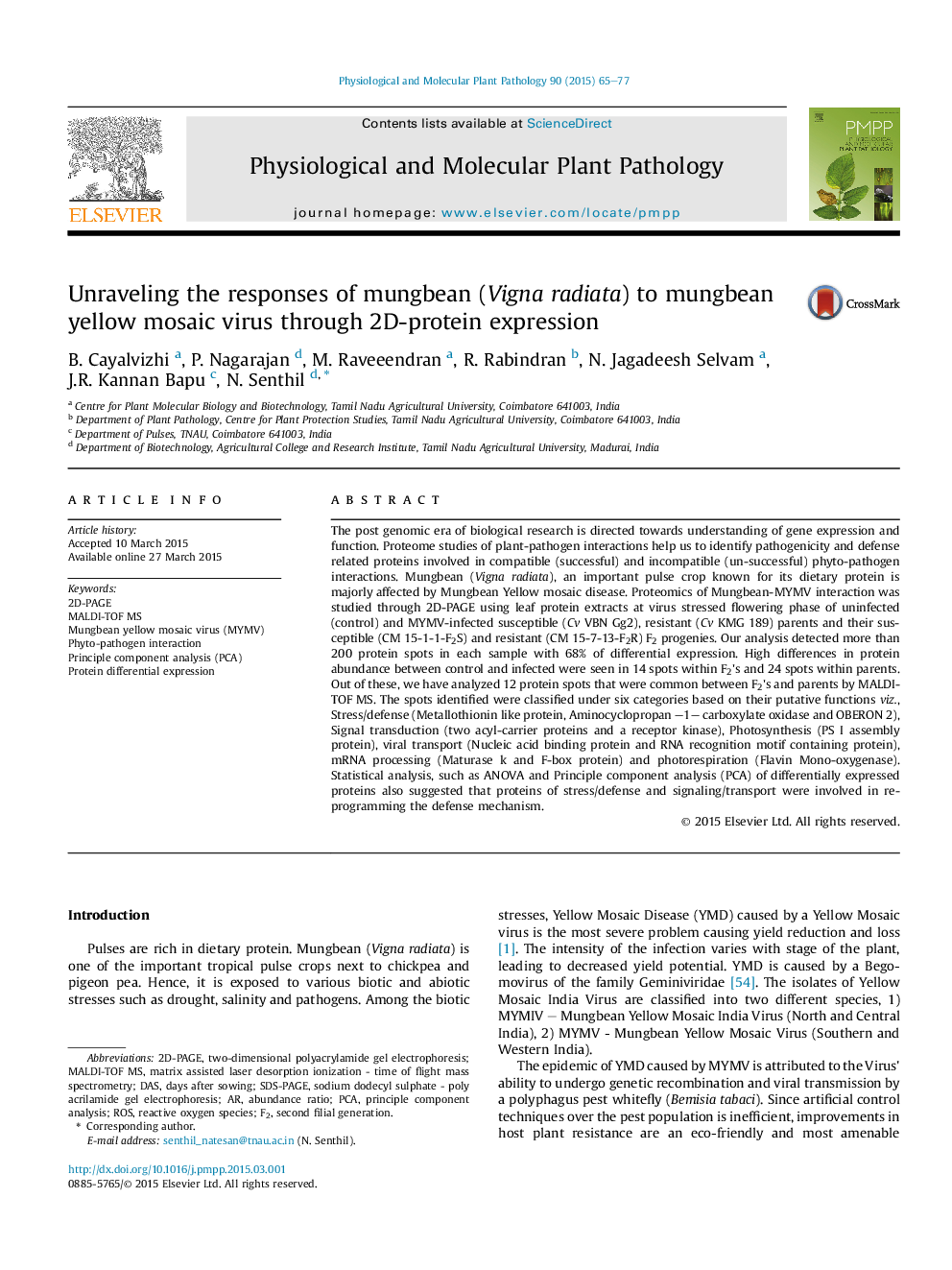| کد مقاله | کد نشریه | سال انتشار | مقاله انگلیسی | نسخه تمام متن |
|---|---|---|---|---|
| 2836284 | 1570849 | 2015 | 13 صفحه PDF | دانلود رایگان |

• Mungbean – MYMV interaction revealed proteins belonging to six different categories.
• The categories are stress/defense, signal transduction, photosynthesis, viral transport, mRNA processing and photorespiration.
• Viral infection was more during the flowering phase, resulting in yield reduction.
• Stress/defense and signaling proteins are majorly involved in changing of defense mechanism.
• 80%of up-regulated proteins in the susceptible parent were involved in viral transport .
The post genomic era of biological research is directed towards understanding of gene expression and function. Proteome studies of plant-pathogen interactions help us to identify pathogenicity and defense related proteins involved in compatible (successful) and incompatible (un-successful) phyto-pathogen interactions. Mungbean (Vigna radiata), an important pulse crop known for its dietary protein is majorly affected by Mungbean Yellow mosaic disease. Proteomics of Mungbean-MYMV interaction was studied through 2D-PAGE using leaf protein extracts at virus stressed flowering phase of uninfected (control) and MYMV-infected susceptible (Cv VBN Gg2), resistant (Cv KMG 189) parents and their susceptible (CM 15-1-1-F2S) and resistant (CM 15-7-13-F2R) F2 progenies. Our analysis detected more than 200 protein spots in each sample with 68% of differential expression. High differences in protein abundance between control and infected were seen in 14 spots within F2's and 24 spots within parents. Out of these, we have analyzed 12 protein spots that were common between F2's and parents by MALDI-TOF MS. The spots identified were classified under six categories based on their putative functions viz., Stress/defense (Metallothionin like protein, Aminocyclopropan –1– carboxylate oxidase and OBERON 2), Signal transduction (two acyl-carrier proteins and a receptor kinase), Photosynthesis (PS I assembly protein), viral transport (Nucleic acid binding protein and RNA recognition motif containing protein), mRNA processing (Maturase k and F-box protein) and photorespiration (Flavin Mono-oxygenase). Statistical analysis, such as ANOVA and Principle component analysis (PCA) of differentially expressed proteins also suggested that proteins of stress/defense and signaling/transport were involved in re-programming the defense mechanism.
Journal: Physiological and Molecular Plant Pathology - Volume 90, April 2015, Pages 65–77